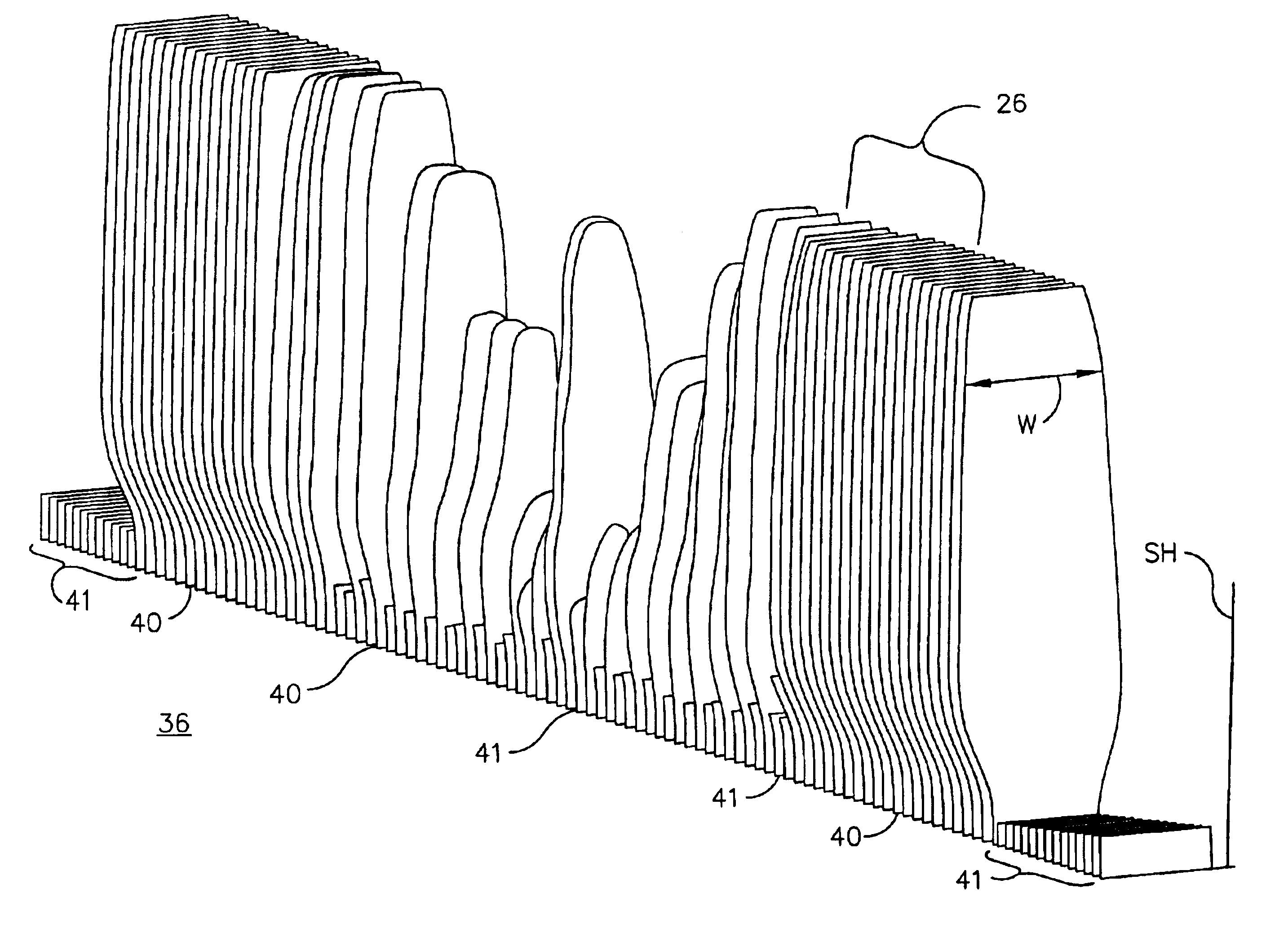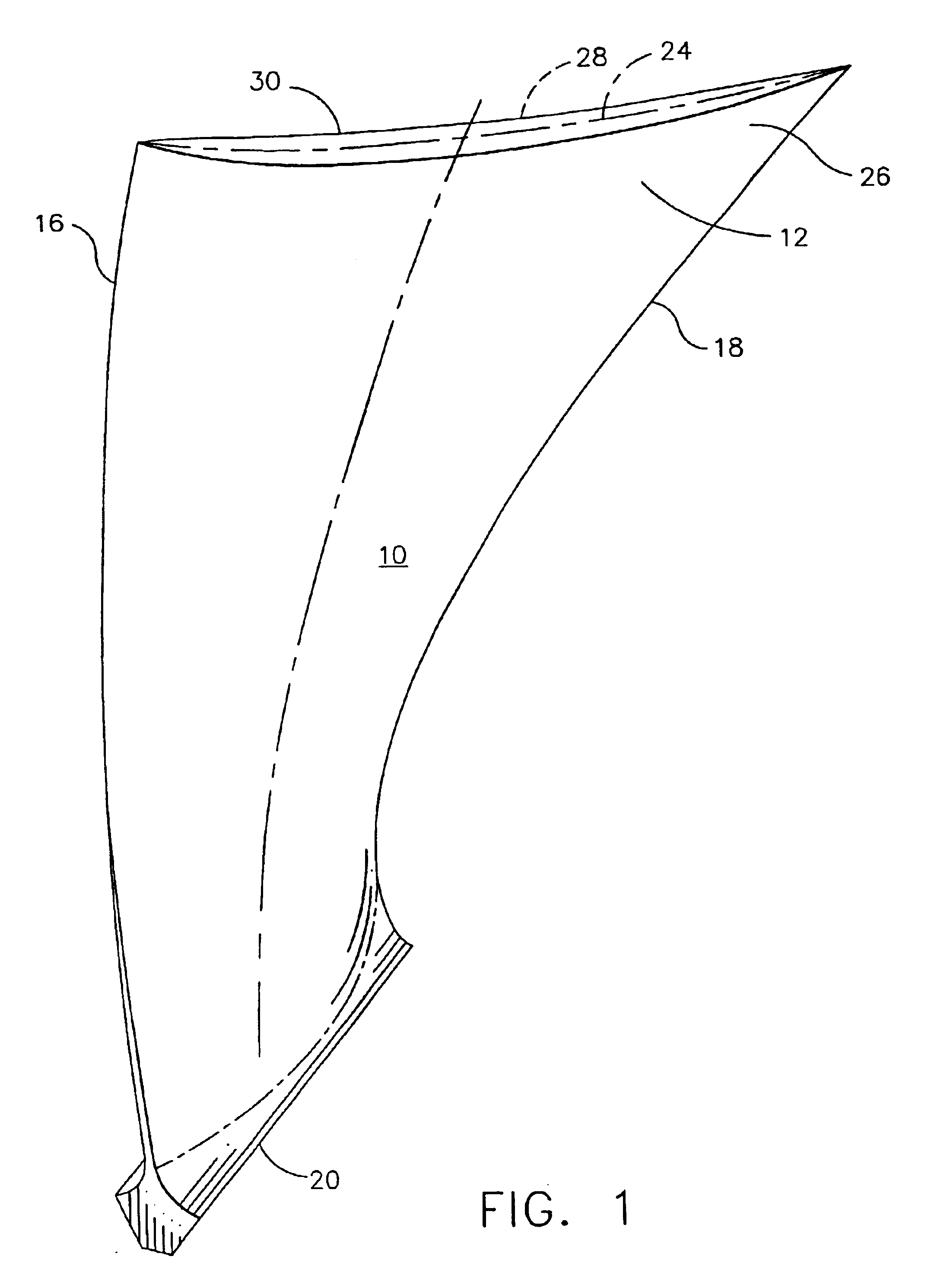Laser projection system to facilitate layup of complex composite shapes
a composite shape and projection system technology, applied in the field of composite airfoils, can solve the problems of blade material erosion, blade fracture or piercing, degrade the performance of the fan and engine, etc., and achieve the effects of reducing the incidence of scrapping material, increasing the speed of ply lay-up, and increasing the accuracy of ply lay-up
- Summary
- Abstract
- Description
- Claims
- Application Information
AI Technical Summary
Benefits of technology
Problems solved by technology
Method used
Image
Examples
Embodiment Construction
Illustrated in FIG. 1 is a composite fan blade 10 for a high bypass ratio fanjet gas turbine engine having a composite airfoil portion 12 typically including a leading edge 16 and a trailing edge 18. Composite airfoil portion 12 extends radially outward from a root portion 20 to an extent generally defining its span and includes a centerplane 24 that generally divides airfoil portion 12 into two parts that culminate in the convex side 26 and the concave side 28 of the airfoil portion 12 of the blade 10. Composite blade 10 is made up of fiber reinforced laminations 30 formed from a composite material lay-up generally indicated at 36, in FIG. 2, of fiber reinforced prepreg plies 30. As used herein, the terms “lamination” and “ply” are synonymous and the term “prepreg” is used in the art to describe the laminations of fibers impregnated with a matrix of uncured or partially cured resin. The airfoil plies 40 are essentially those individual plies that extend outward to form the airfoil ...
PUM
| Property | Measurement | Unit |
|---|---|---|
| Angle | aaaaa | aaaaa |
| Angle | aaaaa | aaaaa |
| Pressure | aaaaa | aaaaa |
Abstract
Description
Claims
Application Information
 Login to View More
Login to View More - R&D
- Intellectual Property
- Life Sciences
- Materials
- Tech Scout
- Unparalleled Data Quality
- Higher Quality Content
- 60% Fewer Hallucinations
Browse by: Latest US Patents, China's latest patents, Technical Efficacy Thesaurus, Application Domain, Technology Topic, Popular Technical Reports.
© 2025 PatSnap. All rights reserved.Legal|Privacy policy|Modern Slavery Act Transparency Statement|Sitemap|About US| Contact US: help@patsnap.com



